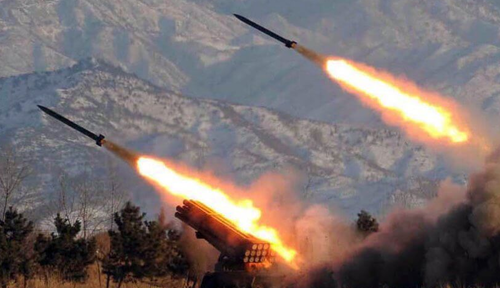Visualizing Asia’s Slide Into A Dangerous New Ballistic Missile Race
The last couple years of military build-up and standoff between China and the United States in the South China Sea has resulted in fears of a new dangerous arms race, as smaller nations in the region rapidly bolster their defenses in order to avoid being “caught in the middle” which would result in having to be overly dependent on one side of the tensions.
A new Reuters report chronicling the growth in regional missile stockpiles says China is “mass producing its DF-26, a multipurpose weapon with a range of up to 4,000 kilometres, while the United States is developing new weapons aimed at countering Beijing in the Pacific.”
This has resulted in other countries once on the sidelines now “buying or developing their own new missiles, driven by security concerns over China and a desire to reduce their reliance on the United States” – the report underscores.
“Before the decade is out, Asia will be bristling with conventional missiles that fly farther and faster, hit harder, and are more sophisticated than ever before – a stark and dangerous change from recent years, analysts, diplomats, and military officials say,” the report adds.
The below map and infograph from Reuters visualizes the emerging ‘Asia-Pacific missile race’…

From the report, here’s a list of who has the growing arsenals and their reach in the region…
- US Indo-Pacific Command (INDOPACOM) plans to deploy its new long-range weapons in “highly survivable, precision-strike networks along the First Island Chain,” which includes Japan, Taiwan, and other Pacific islands ringing the east coasts of China and Russia.
- Japan, home to more than 54,000 U.S. troops, could host some of the new missile batteries on its Okinawan islands, but the United States would probably have to withdraw other forces… Japan has spent millions on long range air-launched weapons, and is developing a new version of a truck-mounted anti-ship missile, the Type 12, with an expected range of 1,000 kilometres.
- Australia recently announced it would spend $100 billion over 20 years developing advanced missiles.
- South Korea fields the most robust domestic ballistic missile program, which got a boost from a recent agreement with Washington to drop bilateral limits on its capabilities. Its Hyunmoo-4 has an 800-kilometre range, giving it a reach well inside China.
- North Korea recently tested what appeared to be an improved version of its proven KN-23 missile with a 2.5-ton warhead that analysts say is aimed at besting the 2-ton warhead on the Hyunmoo-4.
- Taiwan has not publicly announced a ballistic missile programme, but in December the U.S. State Department approved its request to buy dozens of American short-range ballistic missiles. Officials say Taipei is mass producing weapons and developing cruise missiles such as the Yun Feng, which could strike as far as Beijing.
David Santoro, president of the Pacific Forum, was cited in the report as forecasting that “missile proliferation will fuel suspicions, trigger arms races, increase tensions, and ultimately cause crises and even wars.”
Tyler Durden
Sat, 07/24/2021 – 23:00
via ZeroHedge News https://ift.tt/3BDaSLj Tyler Durden
